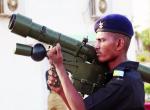A well–entrenched and powerful import lobby operating under the shadow of the political establishment in New Delhi has been silently but vigorously pursuing the strategy of nullifying every Indian effort aimed at developing new and innovative technologies for building state of the art defence hardware and fighting machines required by the Indian defence forces and in the process end Indian dependence on imported military devices. The campaign against the ambitious project for developing the fourth generation fighter jet Light Combat Aircraft(LCA)Tejas, which is now winging its way towards the final operational clearance(FOC), is a striking example of the “behind the scene manipulations” of the import lobby keen on defeating self-reliance in the critical areas of defence development and production. Despite delays and cost overruns, the Tejas which not long back was almost written off, has helped India master many of the frontier technological elements going into the advanced fighter aircraft. Moreover, Tejas has been testified to as one of the “superb and smoothest” fighting machines comparable to the best of the combat aircraft in its class.
Perhaps the most significant achievement of the Bangalore based Aeronautical Development Agency(ADA), which took up the task of designing and developed Tejas virtually from scratch under the illustrious leadership of Kota Harinarayana is that there was not a single “mishap or accident” during the qualification flights of the fighter jet under development. Fighting against heavy odds including fund crunch, poor industrial support and US sanctions that came in the wake of the 1998 Pokhran nuclear blasts, the Tejas development project assumed wings with many of the home grown critical technologies that could not be imported on account of the restrictions imposed on by Missile Technology Control Regime(MTCR). It is not for nothing that Defence Minister A.K.Antony described Harinarayana as the “Bhishmapithamaha of Tejas”. The infrastructure, expertise and vital technological systems developed for Tejas have become an invaluable national asset which could be exploited for building more advanced fighter aircraft with a greater degree of confidence. Similarly, spin offs of the technologies developed for Tejas have benefited the civilian sectors including health care by a substantial extent.
As such, one should look beyond just cost the factor while evaluating home-grown defence projects of national and strategic importance. The expertise acquired during the development of Tejas has proved vital for pushing ahead with the Medium Combat Aircraft(MCA) project taken up by Defence Research and Development Organisation(DRDO).The strategic importance of home grown defence systems lie in the fact that India would not have to worry about the threat of sanctions associated with the US origin fighting equipment and cost escalation, poor performance and delay in the supply of spares associated with the defence hardware imported from Russia. Moreover, the cost of the imported defence hardware could be shockingly phenomenal in comparison to the similar fighting equipment developed indigenously.
Indeed, Antony has been making use of every platform to express his dismay and anguish over the fact that a country like India with the fourth largest pool of scientific manpower in the world continues to depend on imports to meet 70% of its defence requirements. The gloomy ground reality is that even after sixty five years of independence, India could barely produce 30% of its defence needs indigenously”. The country is far, far away from Nehru’s dream of achieving self- reliance in the defence sector,” rues Antony. Antony wonders why India which has made spectacular strides in space exploration and positioned itself as a “software and information technology powerhouse,” cannot repeat the success stories scripted in these two crucial areas in the defence production sector. This is indeed a question that needs to be answered with all the seriousness it deserves.
For long, DRDO had remained a whipping boy for all that had gone wrong with India’s defence development and production sector. But then DRDO, which has come out in flying colours in designing, developing and qualifying a range of state of the art missiles of varying categories cannot be solely held responsible for the abysmal failure of the country to attain self- reliance in defence production. For one, DRDO is subject to pulls and pressures from a variety of sources including the Indian defence establishment. Clearly, there has been a glaring lack of coordination and cooperation between DRDO and the end users (read defence forces). For instance, DRDO blames the Indian defence set up for suggesting changes and improvements in a system half way through its developmental course. While DRDO says this causes delays and cost escalation in the development of the system, defence establishment insists that fighting systems should be capable of periodic technology insertions. Of course, there is a merit in both these arguments. As such the best way out would be to bring in the Indian defence establishment as a stake holder and partner in the DRDO projects focussing on the development of systems and machines meant for the Indian defence forces. In order to boost self-reliance in defence production, the armed forces need to commit themselves to buying the home grown products and help improve upon their performance after field trials.
Indeed, the saga of India’s Arjun battle tank, designed and developed by the Combat Vehicles Research and Development Establishment (CVRDE) of DRDO and produced by the Heavy Vehicles Factory(HVF) at Avadi near Chennai reflects poor coordination and cooperation between the producer and the user. In the field trials, Arjun tank has proved to be a much better performer than Russian T-27s and T-90s. In particular, high speed, quick mobility and the firing power of the Arjun tank have been proven beyond the shadow of doubt. On the other hand, the fire control system of T-90, especially while operating in the sandy stretches of Rajasthan, failed to perform as per specifications. According to CVRDE, the firing accuracy of Arjun is far superior to that of Russian T-90. But then the argument of the Indian army is that the weight of Arjun at 60-tonne is too much to help it move around in the soft soil and riverine terrain of Punjab and Jammu and Kashmir. As such, the Indian army wants to confine Arjun to the arid stretches of Rajasthan. Surprisingly, the Indian army came to this conclusion without subjecting Arjun tank to field trials in the plains of Punjab.
Meanwhile, media reports suggest that there is a move to block the field trials of Arjun in the plains of Punjab as part of the stratagem to clear the path for the import of more T-90s from Russia. Rightly, DRDO on its part has driven home the point that “the time, effort and money spent on developing indigenous fighting equipment including Arjun should not be squandered away in pursuit of glitzy imported hardware.” Right now, there are 128 Arjun tanks in operational service with the Indian defence forces with an order for another 118 in the pipeline. On the other hand Indian army has under its service 1657 Russian T-90s and 2414 T-27Ms. A section of the Indian army is rooting for the latest variant of Russian T-90s on the ground that they are well suited for deployment in the cold environs along India’s international borders with China. As such, the proposal to buy 354 new T-90Ms at an enormous cost could deal not only a severe blow to the Arjun tank project but also impose a severe strain on the public exchequer already reeling under deficit.
DRDO has made it clear that there is no basis to the claim that Arjun cannot operate flawlessly in the plains of Punjab. For the argument of DRDO is that weight of Arjun is distributed evenly over a larger area on account of its larger track and as such its ground pressure is much lower than that of the Russian tanks. Therefore, the idea to do away with the proposed trials of Arjun tank in the plains of Punjab is considered a conspiracy to edge out the home-grown Arjun and smoothen the way for the import of Russian tank. By all means this conspiracy should be defeated and the future of the home-grown Arjun tank ensured now and here.
As it is, after field trials of Arjun in Pokhran range, DRDO did introduce a host of new and innovative technologies to improve the performance of Arjun. Rightly, defence experts points out that Arjun is no way inferior to T-90 and allege that the Indian army is simply enamoured of Russian battle tanks. Indeed, in late 1990s, Indian Defence Ministry had floated the idea of exporting Arjun tank to the friendly countries. Of course, delays and technological flaws did mar Arjun development project. But this was natural in that it was India’s first foray into building a main battle tank. As it is the world over, the tanks introduced for the first time face many handicaps under actual field conditions. This implies that the performance of the newly designed and developed tanks needs to be improved in a gradual and phased manner through the feed-back from the users. As pointed out by an Israeli defence expert the tank design is basically evolutionary. The mobility, firepower and survivability of tanks are the features that are improved upon over a period of time with the feed- back coming from the field trials. And the Indian army should adopt the same approach with regard to Arjun.
Arjun-MKII--an improved version of Arjun tank-- that will enter operational service by 2016 will have an improved missile firing capability. DRDO has incorporated a total of 93 upgrades including13 major improvements in the Mark II version of Arjun. As envisaged now, Arjun-MKI will feature explosive reactive armour panels, panoramic sight with night vision, advanced weapon remote firing, track width mine plough and missile firing through the main gun. Surprisingly, while insisting that the 60-tonne Arjun is too heavy to move freely in the terrains of Punjab, Indian army has asked for features in Arjun-II that would take its weight to 65-tonne. Another contradictory demand of the Indian army is that the weight of the proposed Future Main Battle Tank (FMBT) be limited to 50-tonne while bettering the features of the Arjun tank. And CRDE has already pointed out that it is well neigh impossible to build FMBT with less than 65 -tonne while incorporating many novel features demanded by the army. The army wants the FMBT to feature improved crew protection, a more powerful gun that can slam projectiles and a vastly enhanced mobility. The moral of the story is that Indian defence set up should avoid coming out with contradictory observations while formulating nationally important projects. Moreover, the Indian army should be realistic while specifying too many features in a light weight tank. Balance should be struck between the weight and operational features.
If the work on FBMT is taken up without any loss of time, the first tank will roll out for operational service by 2025. The FMBT project should be taken up on a priority basis as a national project much the same way as the Tejas project was accomplished. But then with Indian army preferring phased improvements of the Arjun tank, the possibility of FMBT project getting shelved is very much on the cards. However, to sustain knowhow and expertise that India has built up for designing, developing and producing state of the art battle tanks, Indian army should acquire Arjun tank variants in large numbers. Otherwise, there is a danger of all the resources deployed for tank projects getting frittered away. The Indian army and DRDO should work closely with each other to continuously improve upon the features of the home grown Arjun tank and help develop categories of Arjun tank suited specifically for varying environmental and topographical conditions. Of course, this is a “complex and challenging” project. But then it is worth its while in so far as building a robust home-grown technological base for building a range of battle tanks is concerned. And eventually such an approach could effectively defeat the strategem of the import lobby working overtime to defeat Indian self reliance in defence development and production.
Published Date: 8th January 2013






.jpg)


Post new comment